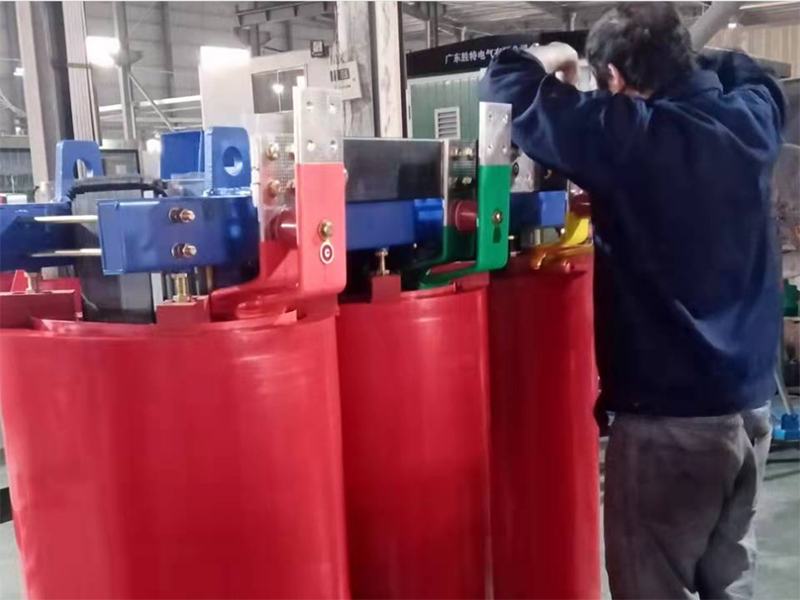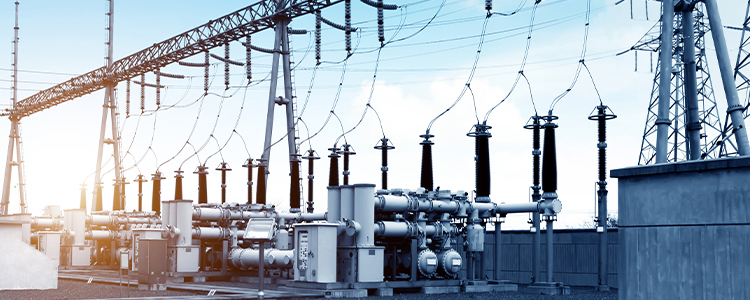1. The influence of temperature The temperature difference between the four seasons is large at the location of the substation. The temperature in summer can reach above 40℃, and the temperature in winter can drop below -25℃. Therefore, the expansion and contraction deformation of the metal body is large, especially in winter, the temperature difference between day and night is extremely high. The temperature is extremely low at night, the elasticity of the gaskets at each connection of the transformer is reduced, and the volume shrinks, resulting in oil leakage. This situation is the same as that of a transformer that does not leak during operation, but leaks due to a drop in temperature after a power outage.
2. The influence of the design structure Because the transformer body oil tank and the radiator are two relatively independent systems. The radiator cooperates with the sealing flange on the oil tank, and is connected and fixed on the main oil tank by connecting pieces such as horizontal connecting pipes. Since the total weight of the radiator itself and the internal transformer oil is thousands of kilograms, the connecting flange and butterfly valve bear a lot of weight, and the forces on different parts are not strictly consistent. It is not parallel to the radiator flange, resulting in uneven stress on the gaskets everywhere, so that the compression amount is larger in the place where the gap between the two flanges is small, and the compression amount is smaller in the place where the gap is large, and it is difficult to achieve uniform compression. The aging of the sealing material deteriorates, and it is easy to leak.
3. The influence of vibration frequency Since the body and the cooler are divided into two relatively independent parts, the mechanical vibration (iron core vibration caused by the magnetostriction of the silicon steel sheet inside the transformer, vibration caused by the magnetic leakage at the joint of the silicon steel sheet and between the laminations, winding load The vibration frequency of the winding and the tank wall caused by the current leakage magnetic flux is inconsistent, and the vibration frequency of the connecting part changes irregularly, which leads to the looseness of the screws connecting the flange of the transformer after a long time of operation, resulting in leakage. Oil.
4. Sealing structure and seal problems As the seals used on the transformer will age and deteriorate with the increase of use time, it is easy to become hard and ruptured. At the same time, due to the fact that some pipelines are sealed with flat flanges, the compression of the sealing ring during the installation process is excessive. Large, resulting in poor overall sealing and loose pipelines.The main reasons for oil leakage caused by sealing problems are as follows:
1) Poor sealing structure The sealing structure is one of the important factors to determine whether the transformer leaks. The common sealing structures of transformers are mainly divided into two types: A. There is a sealing groove or a limited round steel (square steel) structure B. Flat-plate docking infinite structure Relatively speaking, if the first method is adopted for the sealing surface, and suitable and qualified seals are selected, it is not only conducive to on-site installation and maintenance, but also easy to control the compression amount of the seals. The possibility of oil leakage is reduced and the life of the seal is extended. If the infinite sealing structure with rough manufacturing process is adopted, the welding slag is not carefully cleaned during the welding and assembly process, or the sealing surface is hit with metal objects at will, resulting in uneven sealing surface and radial groove marks, which is very easy to cause leakage.
2) Improper selection of seals The quality of the seal is also an important factor affecting the leakage of the transformer. When replacing seals, materials with oil resistance, good oxidation resistance and high temperature resistance should be selected accordingly, and carefully checked during selection. Generally, a sealing ring with moderate hardness should be used, and the compression of the sealing ring should be kept at about 30% to avoid Excessive compression shortens its life. The sealing ring of the transformer should try to choose a flat sealing ring, especially for the high-voltage, low-voltage bushing and other places where a large area is sealed, a flat sealing ring without joints should be selected, which is particularly important for flanges with poor sealing surface quality.
3) Aging of seals For some newly installed or newly repaired transformers, the elasticity of the sealing ring is still good, and no abnormality occurs during the vacuum leak detection. However, after a few years of operation, the elasticity of the sealing ring is weakened, the sealing is invalid, and moisture or even rainwater directly enters the transformer body. Such leakage is often caused by the aging of the sealing parts. If it is not handled in time, it will cause the structural strength of the insulation. Reduced, discharge phenomenon occurs, which will cause great harm to the transformer.
5. Welding seam and welding quality Problems such as welding process and poor welding quality are also important reasons for transformer oil leakage.
1) Cracks appear in the weld When the transformer oil tank is tested for leakage at the factory, it is generally rare to find leakage, but in the field of use, leakage is more common, and one of the main reasons is that there are cracks around the weld. There are two types of cracks caused by welding stress: A. Welding stress and external stress are superimposed. Weldments are subjected to large temperature changes during the welding process. On the weld, the maximum temperature reaches the boiling point of the material, and away from the heat source, the temperature drops sharply. This temperature change will generate internal stress, which will inevitably affect the stress distribution in the entire welding process, causing stress concentration, which will not only lead to process defects, but also directly affect the bearing capacity of the component under certain conditions, such as strength, stiffness, and stress. pressure stability, etc. The transformer oil tank has a complex structure, and the welding beads are crisscrossed, resulting in a large amount of welding tensile stress, resulting in stress concentration, and the stress value can even reach above the yield limit. The hoisting and transportation of the transformer when it leaves the factory is essentially to impose an external load on the transformer oil tank. This external stress is superimposed with the welding stress, reaching or exceeding the material strength limit, which will cause the original crack to continue to expand or deepen, and even generate new cracks and cause leakage. B. Welding stress and corrosion work together. Welding stress combined with corrosion can also produce cracks. This is because the transformer oil contains moisture, organic acids, inorganic acids and peroxides. These substances will have a corrosive effect on the fuel tank. When superimposed with the welding tensile stress of the fuel tank material, cracks may occur.
2) Welding quality problems A 16000KVA main transformer has a large number of sealed welding joints, many welding points, long welding seams, and difficult welding. Due to the influence of many factors such as the manufacturer’s welding equipment, personnel technical level, leak detection methods, etc., the interface (straight seam and horizontal seam, vertical seam joint, welding rod joint, etc.) is often poorly welded or burned through to form blisters and pores. In addition, sometimes there are pores in the steel itself. These defects are not obvious in the early stage of operation due to the adhesion of welding slag and paint. However, with the electromagnetic and mechanical vibration of the transformer and the increase in oil temperature, the oil gradually becomes thinner from these trachoma, Leaks out from pores and cracks.
For more information about transformer, you can check this article: How to find leaks 
Post time: Jan-20-2022












